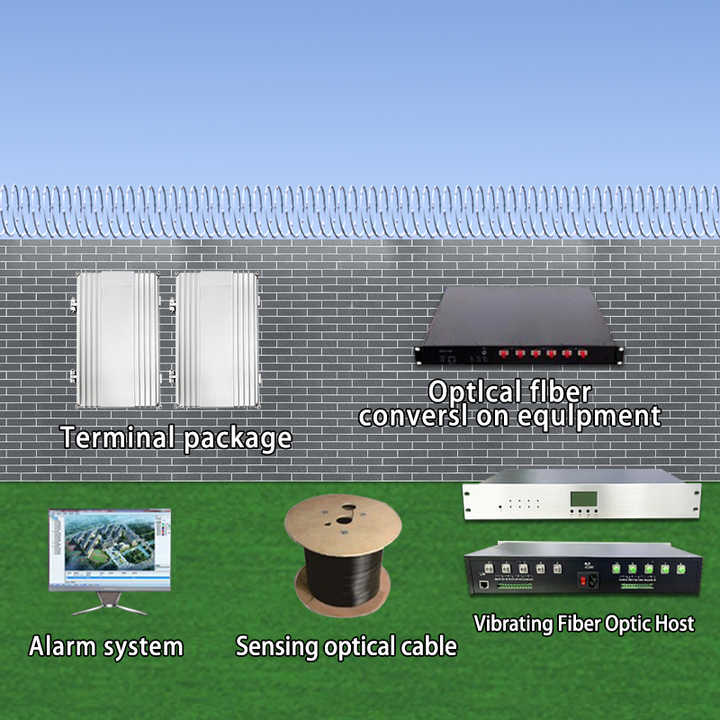Improve Your Safety And Security With Advanced Fiber Optic Safety Solutions
In a period where security is paramount, advanced fiber optic safety systems offer an engaging option for enhancing safety throughout different atmospheres. What ramifications do these developments hold for future safety and security procedures?
Advantages of Fiber Optic Protection
Taking advantage of the benefits of fiber optic innovation dramatically improves safety systems across numerous applications. One of the primary benefits is the increased data transfer capability, permitting the transmission of big quantities of data at high speeds. This is particularly essential for real-time video clip monitoring, where high-resolution feeds can be sent without latency, ensuring instant reaction capabilities.
Additionally, optical fiber display exceptional resistance to electro-magnetic interference, which is vital in settings with potential signal interruptions. This reliability ensures regular performance in critical protection operations. Fiber optic cables are much less vulnerable to tapping and unapproved access compared to typical copper electrical wiring, therefore boosting information integrity and privacy.
An additional remarkable advantage is the durability of fiber optic systems; they are a lot more resistant to ecological variables such as dampness, temperature level fluctuations, and destructive substances. This durability translates to decrease maintenance expenses and longer life expectancies for security setups.
Last but not least, the lightweight nature of fiber optic cables assists in easier setup and routing, especially in complicated infrastructures (fiber optic security system). Eventually, the assimilation of fiber optic modern technology into protection systems not only reinforces security steps but also enhances functional effectiveness
Secret Attributes to Take Into Consideration
When reviewing fiber optic safety systems, numerous vital functions must be thought about to make sure ideal efficiency and effectiveness. Assess the system's discovery range and sensitivity; an extensive array permits for keeping an eye on huge locations, while high sensitivity guarantees that even minor disturbances are detected without delay.
Next, consider the assimilation abilities of the system. A fiber optic safety system must effortlessly interface with existing security steps such as cameras and alarm systems, producing a cohesive safety network.
Longevity and ecological resistance are also vital features. Make sure that the system is developed to hold up against harsh climate condition and prospective physical dangers, as this will lengthen its operational life-span.

Finally, explore the scalability of the system. A durable fiber optic protection system ought to be conveniently expanding to accommodate future demands without considerable overhauls. By thoroughly thinking about these features, you can choose a fiber optic security option that boosts safety and security in your setting.
Setup Process Overview
To successfully carry out a fiber optic safety system, an organized setup procedure is important. This procedure begins with a thorough site analysis to establish the particular security requirements and to identify optimal areas for fiber optic cables and protection tools. Following this evaluation, the setup team will create an in-depth plan, including cable pathways, necessary devices, and compliance with regional guidelines.
Next, the installment entails laying the fiber optic wires, guaranteeing they are secured from environmental aspects and physical damages. Proper handling methods are vital, as fiber optic cables are delicate and can be quickly browse around this web-site damaged. After the cabling is installed, adapters and terminations are thoroughly completed to guarantee signal stability.
The succeeding stage is composed of mounting protection tools such as cams, activity detectors, and alarm systems, all incorporated with the fiber optic network. Extensive screening is performed to validate that all elements are functioning properly and to guarantee ideal efficiency.

Comparing Fiber Optic to Standard Equipments
The advancement of security modern technology has actually led to substantial innovations in the contrast in between fiber optic systems and conventional copper-based systems. Fiber optic systems use light to transfer data, providing premium data transfer and rate contrasted to their copper equivalents. This leads to enhanced data transmission capabilities, making fiber optics excellent for site link high-resolution video monitoring and real-time monitoring.
Furthermore, fiber optic cables are immune to electromagnetic disturbance, decreasing the possibility of signal degradation triggered by exterior factors. This particular makes sure regular efficiency, also in tough settings. In contrast, standard copper systems are more prone to interference, causing prospective susceptabilities in safety and security applications.
Durability is an additional advantage of fiber optic systems. They are much less prone to damage from environmental variables such as moisture and temperature level fluctuations, which can jeopardize copper wiring. Moreover, optical fiber are lighter and thinner, permitting less complicated installment and minimized physical impact.
Nevertheless, standard systems often tend to have lower preliminary prices, making them appealing for budget-conscious projects. While fiber optic systems may need a greater ahead of time financial investment, their long-term advantages-- such as reduced maintenance expenses and better integrity-- usually exceed the preliminary cost, positioning them as a superior choice for contemporary protection demands.
Future Fads in Safety Technology
Emerging trends in safety and security innovation are poised to change the landscape of monitoring and threat discovery - fiber optic security system. As organizations significantly deal with advanced hazards, innovations such as expert system (AI) and artificial intelligence (ML) are ending up being indispensable to protection systems. These modern technologies improve the capacity of fiber optic systems by enabling real-time data analysis, identifying anomalies, and automating reactions to prospective breaches
In addition, the integration of the Internet of Things (IoT) is revolutionizing protection frameworks. IoT devices can provide thorough situational awareness and assist in smooth communication in between different safety parts. This interconnectedness permits more effective monitoring and faster occurrence reaction times.
Biometric verification is additionally obtaining energy, providing a greater level of security with distinct physical characteristics. As this modern technology develops, it is likely to be check my source included right into fiber optic systems for improved access control.
Verdict
In final thought, progressed fiber optic safety and security systems represent a considerable innovation in safety and surveillance technology. The shift from traditional systems to fiber optic services shows a growing trend towards much more efficient and efficient safety measures in a progressively complicated technical landscape.